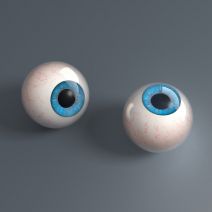 Wireless technology is a staple in the office, but it’s making leaps and bounds in the medical industry, too. With innovations like wireless sensors, pumps, and other Internet of Things devices that can communicate with each other, medical care can be provided in unprecedented ways. But what would you say if we told you that wireless technology can give the blind back their sight?
Wireless technology is a staple in the office, but it’s making leaps and bounds in the medical industry, too. With innovations like wireless sensors, pumps, and other Internet of Things devices that can communicate with each other, medical care can be provided in unprecedented ways. But what would you say if we told you that wireless technology can give the blind back their sight?
Well, these patients may not have perfect sight, but they can regain their ability to see to a certain degree. While there are several retinal implants that help victims of degenerative eye diseases, the Argus device by Second Sight is mostly used to help patients suffering from retinitis pigmentosa-- a hereditary condition in which the light-sensitive cells in the retina depreciate. In other words, the disease gradually erodes the vision of the victim until they’re unable to see anything but the brightest of lights. The Argus can give victims of this crippling condition another chance at living a normal life.
The Argus is a small device that is designed to take the place of some functions of the retina, aiding in sight. It sits on the patient’s retina and receives images wirelessly from a camera mounted on a special pair of glasses. The Argus then converts the images received into electromagnetic pulses, which communicate with the brain via the optic nerve much like a normal retina does. Though the images seen by patients aren’t necessarily full-color, perfect visions of the outside world; patients describe seeing rough black and white renditions, which certainly beats seeing nothing but darkness.
Of course, the inside of the human body isn’t a very hospitable environment for technology, even under the best conditions. Considering the body is full of salt, electronics can corrode and deteriorate over time. The main challenge is creating a device that is capable of withstanding the conditions inside the human body, while making it small enough to not be obtrusive to the human eye.
At first, the Argus only had 16 electrodes, which offered a limited amount of vision for the patient. The modern versions of Argus use 60 electrodes, which allow patients to “see” much better. As time goes on, Second Sight hopes that Argus can provide even better vision for its patients, as well as color vision. If there’s any question of whether the Argus is effective, watch this video.
In the future, these types of eye implants could be used to treat many different kinds of blindness, including optic nerve damage, diabetic retinopathies, glaucoma, and more. However, this might not be for quite some time, considering how the technology would have to imitate the function of the optic nerve, which demands a direct connection to the brain.
With so many great new technologies coming into existence, it’s only a matter of time before technology can be used to help even more people eliminate their physical handicaps. What are your thoughts on using bionic technology to help those in need? Do you think that someday science will have the power to restore vision completely? Let us know in the comments, and be sure to subscribe to our blog for more great tech news.




